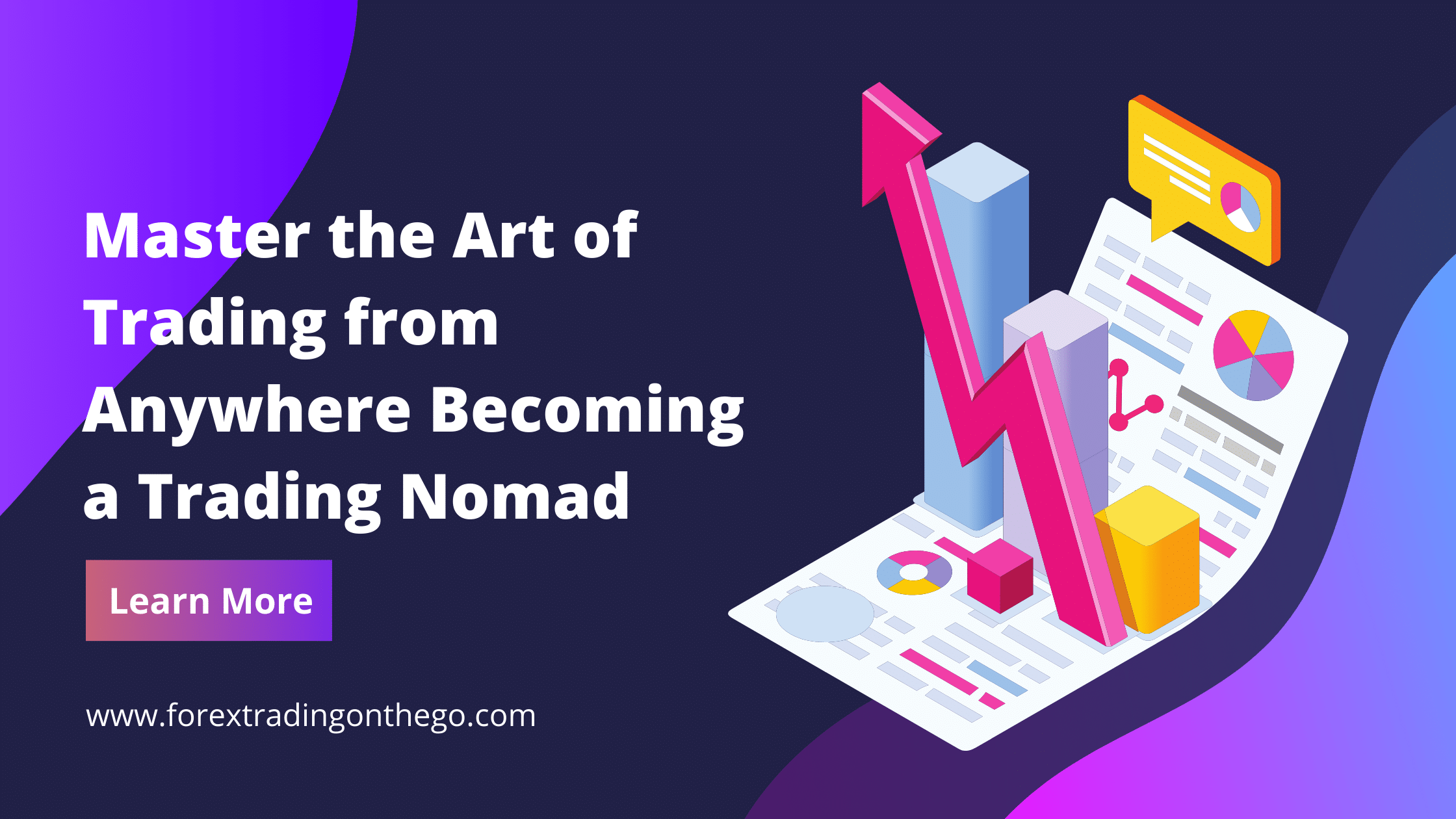 From my experience, the quickest and most effective way to make money through trading is by adopting a low-frequency, ‘hands-off’ approach. In this article, I’ll delve into the concept of “trading from anywhere” and explain why it’s beneficial to make trading an activity you engage in alongside other revenue streams, rather than relying on it entirely for your financial aspirations.
From my experience, the quickest and most effective way to make money through trading is by adopting a low-frequency, ‘hands-off’ approach. In this article, I’ll delve into the concept of “trading from anywhere” and explain why it’s beneficial to make trading an activity you engage in alongside other revenue streams, rather than relying on it entirely for your financial aspirations.
For new traders, I recommend aiming for a minimalist trading strategy. This means making trades in small quantities but with high conviction. One significant advantage of this approach is that you can pursue other interests while staying connected to the markets and placing trades. Whether you choose to travel, maintain another job, or engage in multiple side hustles, trading can complement your lifestyle rather than dominate it. This strategy not only reduces stress and improves overall well-being but is also the best thing you can do for your trading account.
Balance is essential in life, and trading is no exception. Many people lose at trading because they lack moderation, staying up all night watching charts and getting drawn into the short time frame trading trap that ensnares many beginners.
I hope that after reading this article, you will adopt a more relaxed “coffee shop trading” attitude and view yourself as a “global nomad trader” or part-time trader who also has other side ventures. It is a well-known fact that most wealthy people have multiple revenue streams and don’t put all their eggs in one basket. To succeed at trading, follow the path I outline below…
“Nomad Trading” – Too Good to Be True or the Answer You’ve Been Looking For?
 Is it really possible to trade from anywhere—while traveling, at home, on a business trip, or in a coffee shop? Absolutely. In fact, adopting this “trade from anywhere” approach might be one of the best decisions you can make. Here’s how it works…
Is it really possible to trade from anywhere—while traveling, at home, on a business trip, or in a coffee shop? Absolutely. In fact, adopting this “trade from anywhere” approach might be one of the best decisions you can make. Here’s how it works…
Focus on the Right Chart Time Frames
To adopt a “nomad” approach to trading, you need to concentrate on higher time frame charts, such as the weekly, daily, and 4-hour charts. In my opinion, most other time frames are simply a waste of your time.
When you analyze and trade on these higher time frames, you can check the charts daily or even every other day at the end of the day. This method, which I call “end of day trading,” involves making trading decisions based on the daily chart close at the end of the trading day in New York. In other words, you wait until the current daily bar has closed before making any decisions. This approach allows you to avoid the intraday noise and meaningless price movements, freeing up your time to focus on other activities.
Low-Frequency Trading
Focusing on higher time frame charts naturally means you’ll trade less frequently than if you were constantly monitoring intraday charts. This is beneficial, as it allows you to adopt a more relaxed approach to trading and enjoy your life without being glued to your computer around the clock.
The key advantage of this low-frequency trading approach is that it tends to improve your overall trading performance and increases your chances of long-term, consistent success compared to day trading or other forms of shorter-term, high-frequency trading. After all, the ultimate goal of trading is to make money consistently and avoid losses.
Let the Market Do the ‘Heavy Lifting’
Day traders spend hours in front of their computers, constantly analyzing and reanalyzing information, leading to information overload and a never-ending cycle of trying to make trading decisions. This approach is unnecessary and counterproductive. Many people fall into this trap not because “day trading is cool,” but because they become addicted to trading. The moving prices, flashing colours, and the thrill of entering new trades can be as addictive as drugs or video games. Your mission is to control yourself so that the market doesn’t end up controlling you.
To avoid wasting time and raising your stress levels, let the market do the ‘work’ for you. This means setting and forgetting your trades. Don’t check on them constantly; actually forget about them for a day or two. Constantly watching the market won’t help you and will only lead to higher stress levels, resulting in a mind-set that is not conducive to skilled, patient trading but rather to frantic, random, and illogical trading.
Trade to Live, Don’t Live to Trade
 Many people spend their money on material things, hoping it will make them happy, only to find the allure quickly fades after they get the item they desired. Having fewer material possessions is better not only for your bank account and overall financial situation but also for your mind and stress levels.
Many people spend their money on material things, hoping it will make them happy, only to find the allure quickly fades after they get the item they desired. Having fewer material possessions is better not only for your bank account and overall financial situation but also for your mind and stress levels.
This minimalist approach also applies to trading. The less you trade, the less you worry about the markets, and the less likely you are to over-trade and over-leverage your account. It’s no coincidence that most successful investors and traders are not day traders.
Less is more!
When you reduce the frequency of your trades, you’ll find that your trading performance gradually improves. Why does this happen? It’s simple: human brains are not naturally wired for trading because we struggle with self-control and regulating impulses. Sitting in front of a computer with prices moving up and down and the potential to make endless amounts of money is a recipe for losing self-control. This is why less is more.
The less your brain is involved with the markets and your trades, the better you will perform. The most effective way to practice consistent self-control is to lessen the need for it.
Core Points of the ‘Nomad’ Price Action Trading Strategy
Now that you understand why trading like a nomad benefits both your trading performance and lifestyle, let’s discuss the main components of a “nomad” trading strategy and how to implement it:
- End-of-Day Trading: End-of-Day trading is the cornerstone of the nomad trading approach. The idea is to make trading decisions only after the New York close each day, primarily using daily charts and considering only bars that have closed out. This method eliminates the noise and confusion of lower time frame charts.
- Set and Forget: Set and forget trading means that once you identify a trade and set the parameters (entry, stop, position size, exit), you walk away from the computer until the next day after the New York close. Avoid checking the charts constantly or frantically trying to predict market movements.
- Simple Trading Signals: Nomad trading relies on price action signals without the need for indicators commonly seen on other trading sites. These indicators can be confusing and overly complicated. A nomad trader, who prefers to enjoy life rather than stare at charts all day, needs a simple trading approach. The challenging aspects of trading are money management and psychology, so keep chart analysis and trading straightforward.
- Money Management: Effective money management is crucial for a nomadic and relaxed trading approach. If your risk level is too high, you’ll be preoccupied with your trades and unable to set and forget them. Control your risk per trade to a mentally manageable level, ensuring you can stick to your strategy without undue stress.
Conclusion
 I hope this article has highlighted the benefits of “trading like a nomad.” While it may take some time to adjust to trading less, checking your trades less frequently, and spending less time on the computer, trust me—your trading performance will improve if you adopt this approach. The key is to distract yourself from the markets, use a simple strategy like price action, and manage your risk properly. Find a hobby, travel, and actually get a life so that you stay occupied and avoid the temptation to over-trade.
I hope this article has highlighted the benefits of “trading like a nomad.” While it may take some time to adjust to trading less, checking your trades less frequently, and spending less time on the computer, trust me—your trading performance will improve if you adopt this approach. The key is to distract yourself from the markets, use a simple strategy like price action, and manage your risk properly. Find a hobby, travel, and actually get a life so that you stay occupied and avoid the temptation to over-trade.
To effectively trade from anywhere and embrace this new way of trading, you need to know how to analyze price action and implement the entire strategy. By combining price action strategies with a low-frequency, nomad-like approach, you will start to see slow but steady improvements in your trading performance.

